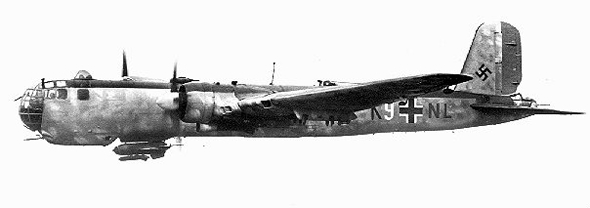Heinkell 177 Greif
History, technical sheet and photo

Heinkel 177 history
Since 1937, the main European powers launched rearmament programs for bomber fleets. Germany is no exception to this arms race and its engineers are looking to develop a medium-range heavy bomber. Heinkel designs Projekt 1041, selected by the German Air Force, the Luftwaffe.
Commissioned in 1942, this bomber is named He 177 Greif (“griffin” in German) whose first order was passed in 1939 is also built by the firm Arado. The use of this device is varied according to the different versions developed by the German engineers: there are He 177s for classic bombing missions, for anti-ship combat, as well as for direct ground support missions .
The Heinkel 177 heavy bomber’s capabilities are limited by a series of problems related to its engine and its structure. Its main fault lies in its fuel consumption, extremely expensive for Germany, which marks the end of the operational use of the aircraft at the end of 1944.
During the Battle of Normandy, He 177s were used during night bombing missions, as well as to dump underwater mines in the English Channel against the Allied fleet.
Heinkel 177 specification
Creator/User: Germany
Denomination: Heinkel He 177
Number built: 1,146
Length: 20,04 m
Wingspan: 31,43 m
Height: 6,93 m
Unloaded weight: 16,800 kg
Loaded weight: 31,000 kg
Maximum speed: 510 km/h
Operational range: 5,500 km
Ceiling: 3,200 m
Armament: one 20 mm MG 151 gun, three 13 mm MG 131 gun, 3 7,92 mm MG 81 machine gun, carrying capacity of 600 kg of bombs
Crew: 6
Powerplant: two Daimler-Benz DB 610 “power systems”, each one created from a twinned-pair of Daimler-Benz DB 605 inverted V12 engines, 2,900 PS (2,133 kW) each


